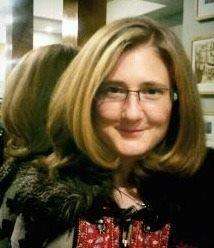Editorial Note:
This profile of Professor M Seedat-Khan, CCS is brought to you through a partnership between the Association for Applied and Clinical Sociology (AACS) and Applied Worldwide. Thank you to AACS and all those who made valuable contributions to the Profiles in Applied & Clinical Sociology series.
This profile is presented with the intentions of: 1) providing students with examples of applied sociology, 2) providing market value to sociological skills and services, and 3) promoting the work of individual sociological practitioners and organizations. You can learn more about AACS at AACSnet.net.
Professor M Seedat-Khan, CCS
Professor M Seedat-Khan is a certified clinical sociologist with a BA in sociology and psychology from York University in Canada, and a Master’s in Social Science and PhD in Sociology from the University of Natal in South Africa. Their “primary clinical education specialization directs attention to differently-abled learners, achieved via a scientifically rigorous clinical program.” Professor Seedat-Khan’s program “simply managing academic-related tasks (SMART), equips learners with cognitive and application proficiencies and dexterities improving academic output. The theoretical and clinical intervention reduces learning challenges by reducing the failure of formal assessments. The principal psycho-sociological practices are delivered via individual and group consultations. The program established muscular neuro connections to improve academic outcomes.”
When we asked Professor Seedat-Khan about establishing a clinical career with SMART, they told us:
“I began engaging in clinical sociology in 2007, when I joined the Department of Sociology at the University of Johannesburg (UJ) under the mentorship of Professor Uys, who encouraged me to become involved in the field via the International Sociological Association (ISA) and the South African Sociological Association (SASA), promoting Clinical sociology. I identified strengthening students’ individual learning capabilities and application abilities as a critical area in the academic sector in a post-apartheid context. Class sizes at universities were growing exponentially.
To service students effectively a clinical intervention was required. I began utilizing effective strategies to adopt in classrooms with 1600 students. The challenges experienced by students were broken down systematically and I established methods to SMART. I began employing simple learning and processing methods in the classroom and later in smaller numbers with postgraduate students and ultimately on a one-to-one basis in a clinical setting. The natural progression led to certification and active participation in applied and clinical sociology. I have subsequently served on the AACS board, AACS professional development and certification review committee. I support mentorship via the academy and have developed and designed a postgraduate degree in clinical and applied sociology, currently in its first offering.”
Professor Seedat-Khan’s SMART program includes five 60-minute sessions that deal with specific learning-related issues. Each session progresses through smart tasks for the student to execute daily. About each session, Professor Seedat-Khan told us:
Session one includes an introduction to SMART, session schedule, types of learners, attention span, learning style, four ways of learning, memory bank, timetable planning, a personalized smart tool kit, downloading time, grade cards, signs, math, picture-perfect summaries, learning style and strategies and enhanced study technique plans. Session two includes multimodal strategies, scarf model, learning methods, factors affecting learning, outcomes, steps to climb, tips and the learning cycle. Session three includes the four steps to learning, four ways that learning occurs, benefits of music, essay writing, test strategies and memory tips and goals. Session four includes problem-based learning and brain exercises. Session five includes addressing challenges, a feedback session and measurement of results.
Read the full interview with Professor Seedat-Khan below to learn more about her inspiring work in academic success, and connect with them further on Twitter and via LinkedIn!
Using Sociology in Practice
In general, how do you use sociology in practice?
Via clinical practice, research, training and knowledge dissemination. Visit www.simplysmart.co.za for more information.
How do you use sociological research methods in practice?
When engaging with a learner in a clinical setting, my aim is to “develop, promote and support quality sociological education and practice.” I adopt guidelines espoused by Ronald Lippitt and Gordon Lippitt (1978), who identify three critical physiognomies;
- Knowledge areas,
- Skill areas, and
- Attitude areas (Fritz & Rhéaume 2014: 17).
The research methods employed are varied. I have training in both quantitative methods and qualitative methodologies. However, qualitative methods are best suited to a clinical application of this nature. The use of quantitative methods as well as the use of a mixed-methods approach becomes essential at certain stages. I employ narrative interviews, which allow the learner to clearly demarcate their learning experiences and challenges, allowing for an informed clinical intervention. Largely, I deem it important to focus my clinical intervention on helping each learner realize their potential, irrespective of their historical academic performance.
How do you use sociological theory in practice?
Eight critical roles identified by clinical sociologists are used interchangeably in a clinical setting with the learner. These roles assist to achieve a paradigm shift which results in positive, lasting study methods, techniques, and applications. These roles are aligned with the five SMART sessions. These include:
- objective observer and fact-finder,
- process counsellor,
- identifier of alternatives and resources,
- joint problem solver, trainer and educator, and
- information specialist (Fritz & Rhéaume 2014: 17).
Within a clinical setting when addressing concerns related to neuro-typical and differently-abled learners, Cooley’s (1922) looking glass self plays a central role in how students are taught to respond to SMART principles. The looking glass self demonstrates “I am not who you think I am. I am who I think that you think I am” (Cooley, 1922: 78). This results in an exact view of the learner’s potential. The learner is equipped to understand how the past has shaped the present and the factors that affect current learning, application, and outcome.
Lessons for Future Practitioners
What types of courses should undergraduate students take in preparation for a career in your type of practice?
- Applied Sociology
- Theory
- Social Psychology
What types of courses should graduate students take in preparation for a career in your type of practice?
Contemporary Theory Courses that expose students to selected contemporary theorists and theoretical debates. The social theory offers explanations for social world functions and the way humans experience the world. Engage in discussions on sociological theory and the theoretical origins of sociological philosophy.
Methods and Applications courses that introduce methodological skills, ethical practice, clinical and applied methodology and professional ethics, required for working with clients. Key areas must include effective engagement, active listening, interviewing, assessment and applied models. Focus on the whole person in designing sociological models. Interventions and Perspectives establish a link between existing social problems and clinical interventions.
Courses that aim to build the capacity to engage in clinical analysis, and critical assessment of beliefs, policies and/or practices. Competencies and skills, intensify the role of clinical sociologists to reduce social problems. Research that requires the practical design and execution of clinical models; skilling clinical sociologists with developing multi-level models aimed at individuals, organizations and communities. Clinical models form the basis for intervention, which includes social policy programmes; institutional renewal; expert inputs; and community involvement.
What types of experiences should undergraduate students seek in preparation for a career in your type of practice?
Volunteer, community engagement, social responsibility, lobbying and advocacy.
What types of experiences should graduate students seek in preparation for a career in your type of practice?
Volunteer, community engagement, social responsibility, lobbying and advocacy.
What texts or authors can people reference to learn more about the work you do as an applied or clinical sociologist?
- Uys, JM
- Fritz, JM
- Seedat-Khan, M
More generally, what are the best outlets to learn more about the work you do as an applied or clinical sociologist?
- The Association for Applied and Clinical Sociology (AACS)
- International Sociological Association’s Research Committee on Clinical Sociology (ISA RC46)
How would you describe the daily life of an applied or clinical sociologist?
Exciting, demanding and rewarding.
What advice do you have for aspiring applied and clinical sociologists?
Work towards reducing a pervasive social problem in your immediate circle.







